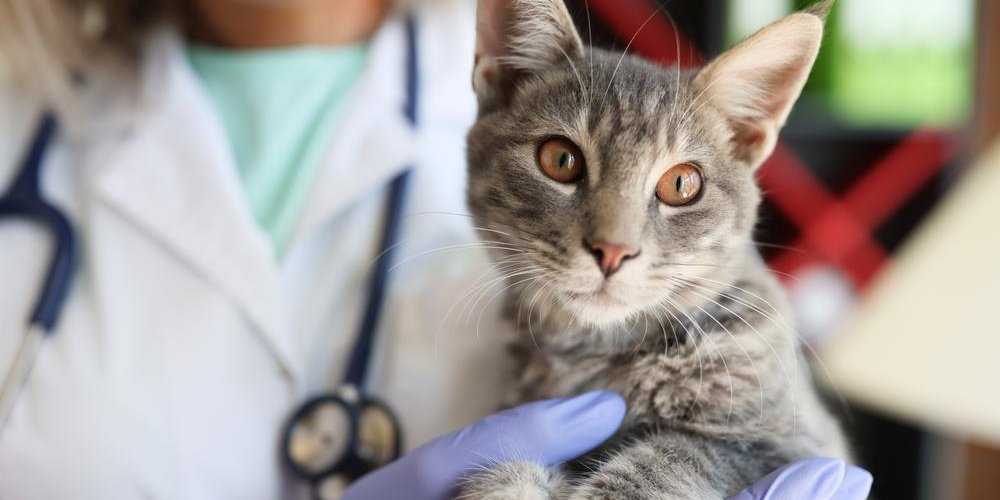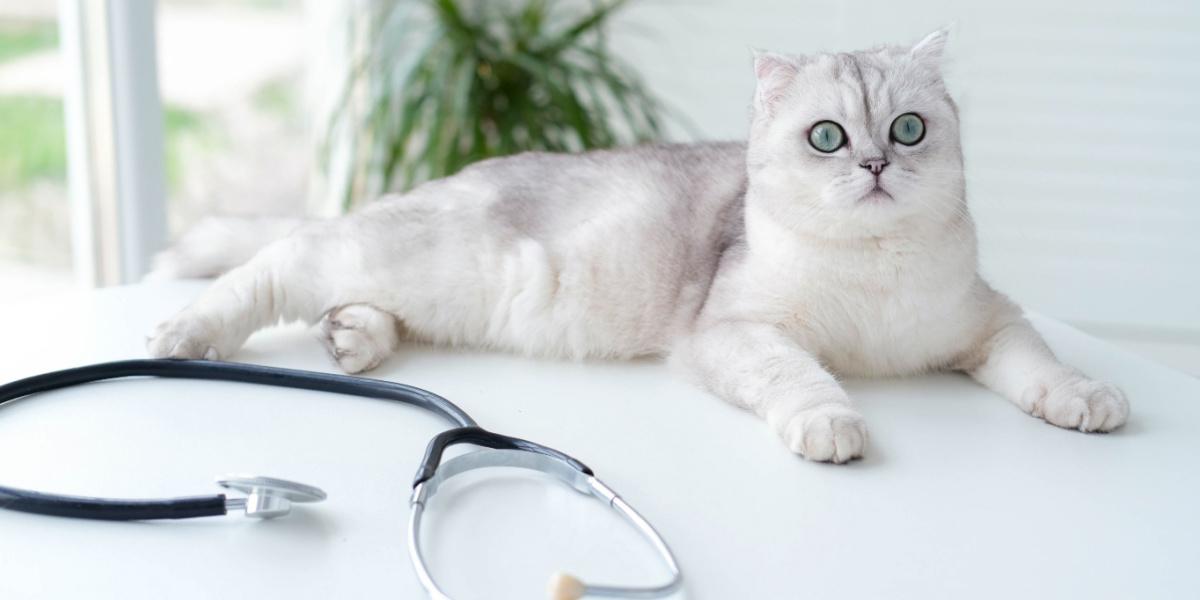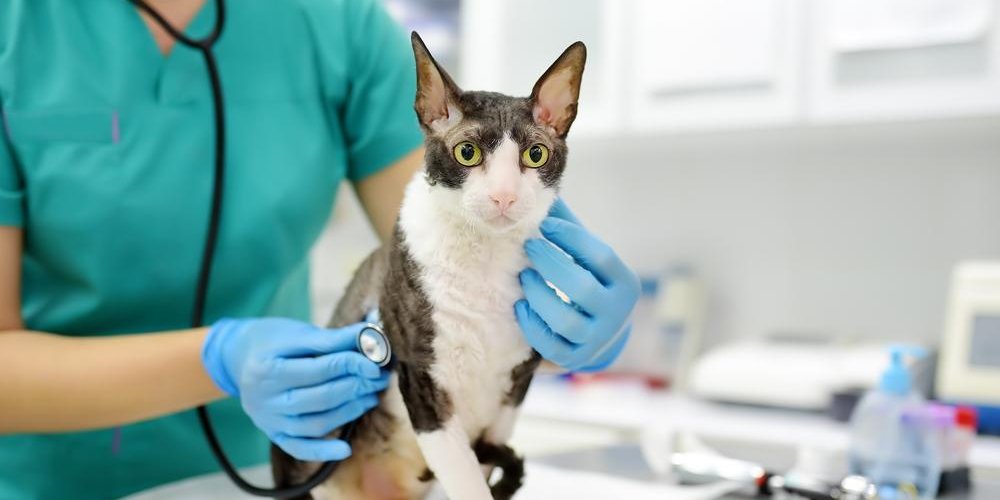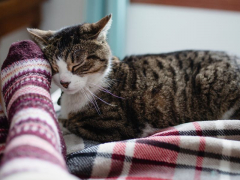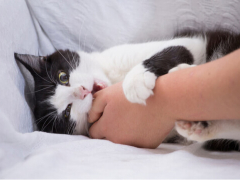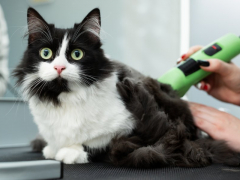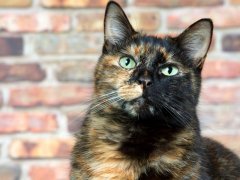megaflopp / Shutterstock.com
Have you made annual doctor appointments for your whole family yet? Don’t forget to schedule your cats too! Your cat should see their vet annually for a wellness examination—and senior cats should be seen at least twice per year. In this article, you’ll learn what a cat wellness check involves, approximate costs, what to expect, and some frequently asked questions.
Are Annual Cat Wellness Exams Important?
Yes! The purpose of the annual wellness exam is for your veterinarian to establish a baseline of your cat’s general health condition, focus on preventive care, and provide recommendations to maintain or improve their health. These exams provide the chance to get ahead of any ailments before they become severe.
As a veterinarian, when I see a cat for their annual health exam, I expect them to be in a stable state of health and not actively affected by severe health issues. I also expect that cats with current health conditions or long-term illnesses are generally in a good place with treatment and medications. If your cat is experiencing serious symptoms, make an appointment as soon as possible—don’t wait for their annual exam to come around.
What Does a Cat Wellness Exam Involve?
There are several parts to a wellness check-up. My own veterinary practice follows these steps as you’ll read but keep in mind there may be some differences between veterinary practices as to how these parts are approached.
Collecting Health Information
A vet’s office will look to collect as much information as possible before a wellness check. If it’s your first visit to a specific vet’s office, they will look to get any previous health records ahead of time so that your new vet can get up to speed on your kitty’s previous and current health needs.
I review as much detail as possible to familiarize myself with each patient and be well-prepared for their exam and health discussions.
When you arrive for a wellness visit with your cat, a veterinary assistant or nurse will collect more specific health history information. This may include some of the following:
- Eating and drinking behavior (including specific diet and feeding amounts)
- Litter box habits (urination and bowel movements)
- Signs of coughing or sneezing
- Signs of vomiting or diarrhea
- Any changes in behavior
- Exercise (how much, type, how often)
- Grooming and self-care habits
- Interactions with other pets in the home
- Changes in lifestyle
- If your kitty is indoor only or if they go outdoors
I find that detailed answers to these questions are very helpful so that I know exactly how to direct some of my follow-up questions.
Temperature, Pulse, Respiration, Weight
Once you’re settled in an exam room, an assistant or nurse may collect these initial health parameters before the doctor comes in. At some vet offices, this step may be skipped until the doctor is ready so that a cat will be subjected to as little handling as possible.
Physical Exam
There are several parts to a cat wellness check, facilitated by all members of a veterinary team. smile23 / Shutterstock.com
I start with an introductory discussion and then move on to the physical examination. If a cat is out and about in the exam room, I can already see general behavior and activity. Seeing how a cat walks, navigates the room, jumps, and behaves can provide many initial clues about health.
The below exam steps follow the order I perform them in. I usually start from the front and work toward the back, unless the cat seems to prefer something different. Some cats may be stressed, “spicy,” or even act aggressively during exams, requiring a more limited approach. Some cats may also be more sensitive about particular areas like their ears, mouth, or hips, requiring a more limited assessment.
These are all of the following are the basic components of an annual vet exam:
- Eyes: A look at the eyes from a short distance and a closer look with an ophthalmoscope that has a light and magnifying lens.
- Ears: A general look and a vet may look deeper in the ears with an otoscope if the cat is amenable.
- Nose: A visual look for sneezing or discharge from the nose.
- Mouth: Many cats tolerate a decent look at their teeth and the front part of their mouth. It is usually difficult to see far back or under the tongue. Gingivitis and dental tartar/calculus are assessed along with any concerns like (resorptive) lesions on the teeth. The gums are also assessed for good gum color (a light pink) as a sign of good blood perfusion and moisture as a sign of healthy hydration.
- Throat: The throat is palpated or felt carefully. This includes checking lymph nodes in the neck and the thyroid glands. In older cats, this is a way to screen for hyperthyroid disease.
- Respiration: This involves both a visual look at the breathing rate and effort as well as listening to the lungs with a stethoscope.
- Heart: This involves listening to the heart with a stethoscope, assessing heart rate, rhythm, and sound.
- Abdomen: By gently compressing the abdomen, a vet can feel certain structures, including kidneys, stomach, intestines, spleen, and urinary bladder. Subtle changes may be difficult to feel but a vet can assess for any masses and check for signs of abdominal pain.
- Urinary/genital/reproductive: Assessing the kidneys and bladder is part of abdominal palpation. In addition, the vulva or prepuce may be examined. Testicles will be gently felt with intact male cats. Female cats will have their mammary tissue checked for lumps or masses.
- Anal/rectal: This may only involve a visual assessment. Performing a rectal exam is stressful for cats, so this may not be performed during a wellness exam unless necessary.
- Weight assessment: Besides weighing the cat, a vet determines the degree of fat presence and muscle. These findings are used to develop a body condition score and a muscle condition score.
- Muscle and skeletal: In addition to seeing how your cat moves around the exam room, each limb is typically flexed and extended to check for signs of pain or limited mobility.
- Skin and haircoat: The coat may be combed or brushed to check for fleas, dandruff, or hair mats.
- Feet and claws/nails: Exam includes the paw pads, spaces between the toes, and nails. A vet will often spread the toes to extend the claws in cats that will allow it.
- Neurologic assessment: Seeing how a cat behaves and moves around the room provides insight into general neurologic health. Other parts of the exam, like the eye exam, can provide info about the neurologic state as well. The spine may be palpated for signs of back pain. Because it may be stressful and difficult to interpret well in cats, a full neurologic exam may not always be performed.
Vaccines
The date for a wellness check may line up with the due dates for one or more routine vaccinations. Two regular vaccinations are continued during a cat’s life to safeguard health.
- Rabies vaccination: Many states require this vaccine for all cats.
- Feline viral combo vaccine (feline distemper): Abbreviations for this vaccine include FVRCP and HCP. This vaccine includes protection against feline herpesvirus (also known as feline viral rhinotracheitis), feline calicivirus, and feline panleukopenia.
A veterinarian may also recommend the feline leukemia vaccine (FeLV) for cats that regularly go outdoors or otherwise have exposure to outdoor cats (which may include a housemate cat who goes outdoors).
Labwork
Blood, urine, and fecal samples provide important indicators of overall health and clues for early or subtle illness. While this can be the case for cats of any age, it is especially true for cats 10 years of age and older. A physical exam can provide a lot of information, especially about the anatomy or structure of the body. But it cannot tell as much about physiology or how the body is functioning.
The most basic lab work panel will typically include red and white cell count (CBC), liver values, kidney values, and key protein levels. More specific lab work may assess thyroid function, pancreatic and gallbladder health, additional proteins, and electrolytes. A urine sample is often included.
Because of a greater likelihood (compared to people) of acquiring and carrying intestinal parasites, our veterinary office advises an annual fecal test, which is a common recommendation.
A veterinarian may choose to have lab work performed in the hospital itself, or they may choose to send samples out to a lab, especially if there are no current health concerns.
My clinic sends all fecal samples out to our lab, but for blood and urine samples, we have the ability to do either. Most of our wellness lab work is sent out to keep our bloodwork machine free for more urgent needs.
Health Discussion
During an exam, a vet will discuss your cat’s general state of health. Discussions about nutrition, healthy weight, and behavior are common. Weight loss is a common topic and I often help calculate feeding amounts and make diet recommendations. Flea, tick, heartworm, and intestinal parasite prevention is also a common topic, even for indoor cats.
Clients also bring up things they see at home but are not sure if a medical concern exists or not. This may include coughing, sneezing, hairballs, and new behaviors. I look to provide some guidance and ways we can monitor and recheck those concerns if they continue.
What Does a Cat Wellness Check Cost?
An exam with a veterinarian is only one cost component to expect during a full wellness check. Maria Sbytova / Shutterstock.com
The average cost of cat wellness exam in early 2023 was just over $60. Differences in cost may depend a lot on the region you live in. The average cost for a vet exam by state ranges from about $25 to $186. Living in or close to a large city may also contribute to higher expenses.
Additional Costs
Unlike in human medicine, all veterinary medicine costs are typically out of pocket, even with insurance.
Costs are also a la carte, meaning every item or service is charged separately. The wellness exam fee includes only the examination with the doctor. Needed vaccines, lab work, and other services (such as nail trims) are additional.
Other items commonly advised or needed during routine wellness exams:
- Rabies vaccine: $20-$30
- FVRCP (HCP) vaccine: $20-$40
- FeLV vaccine: $25-$45
- Fecal exam: $25-$45
- Bloodwork: $80-$200
In my practice, we strive to be open and upfront about costs. This includes providing estimates before the visit starts that contain all the wellness items currently due. If anything changes after the exam or health discussion, we provide cost updates as we go.
If your veterinary practice does not offer a wellness plan, pet insurance may be another way to help with costs. Most plans are still based on reimbursement, meaning you still pay all costs at the time of service at your veterinary practice. But I feel that getting reimbursed is still better than not. I encourage my clients to look into plans and see if one may fit their needs and budget.
For more info, see Cats.com’s Best Insurance for Cats in 2024.
Frequently Asked Questions
Do cats really need an annual checkup?
All cats should have an annual wellness check, even if they are young and appear healthy. Detecting disease early is crucial to maintaining a state of general health and wellness. Consulting on diet, weight, and behavior are very common.
Wellness exams also allow veterinarians to weigh in on some basic questions or concerns that cat parents may have at home.
How often should a cat have a health check?
How often your cat needs an exam may depend on your cat’s needs. Most cats should have regular examinations once a year. Senior cats over 10 years of age should be seen every 6 months. Cats being managed for any specific health conditions may need to be seen more often too.
Do indoor cats need annual vet visits?
Although more protected from the outdoors, indoor cats are still at risk for progressive health concerns over time, just like anyone. Problems with behavior and being overweight can be more common for indoor only cats, prompting discussions during annual visits.
-
Gfeller, R., Thomas, M., & Mayo, I. (2020, March 26). Physical Exam Checklist for Pets: First Aid. Veterinary Partner. Retrieved January 11, 2024.
-
Kilroy, A. (2023, March 29). How Much Does a Vet Visit Cost? Forbes. Retrieved January 4, 2024.
-
Todd-Jenkins, K. (2020, November 16). Quick tips for a better feline exam. DVM360. Retrieved January 11, 2024.
-
Weir, M., Williams, K., & Yuill, C. (n.d.). Wellness Examination in Cats. VCA. Retrieved January 11, 2024.
-
WSAVA Global Nutrition Committee. (2020, August 13). Body Condition Score (Cats). World Small Animal Veterinary Association. Retrieved January 4, 2024.
-
WSAVA Global Nutrition Committee. (2014). Muscle Condition Score (Cats). World Small Animal Veterinary Association. Retrieved January 4, 2024.
